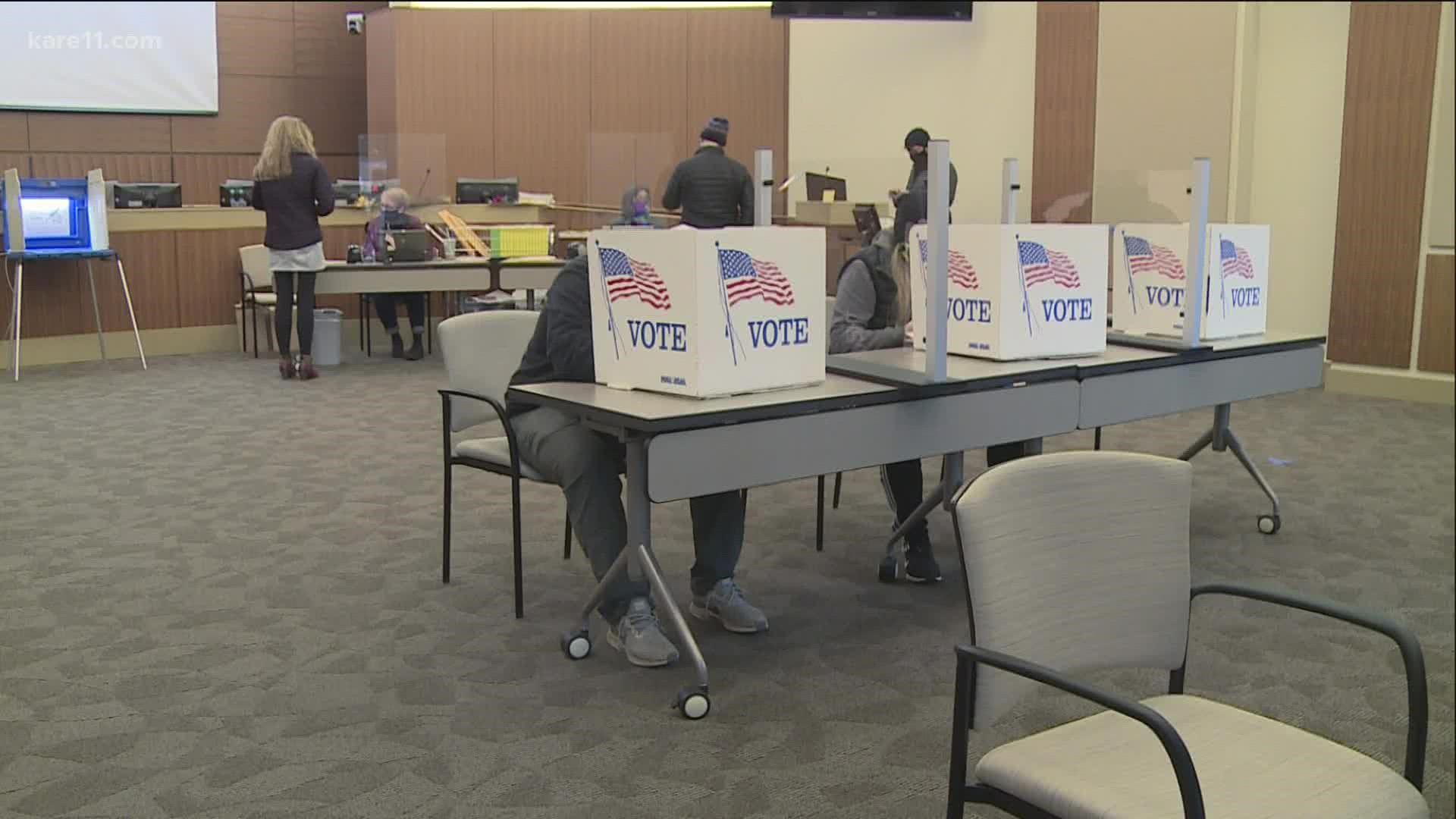MINNEAPOLIS — This story originally appeared on KARE 11 in November 2021.
Voters in Minneapolis, St. Paul, St. Louis Park, Minnetonka and Bloomington are all using ranked choice voting in their municipal elections this year.
What’s the point of that system, you may ask?
According to the folks at FairVote Minnesota it’s all about encouraging more participation in elections and ensuring that candidates build broader support in order to be elected.
“You can imagine who turns out for an early August primary for local races. Ranked choice voting merely puts all the candidates on the ballot in a single higher turnout election in November,” Jeanne Massey of FairVote Minnesota told KARE.
Traditionally city elections have a nonpartisan primary in August, with the top two finishers moving on to the November general election matchup. Ranked choice cities essentially combine the summer primary and the November election into one instant runoff election. Instead of going to the polls twice, voters simply rank their choices so they can still have some influence even if their top pick doesn’t win.
In Minneapolis, you can rank your top three choices for mayor and city council. In St. Paul, you can rank your top six choices. You don’t have to rank other candidates, but your ballot carries more weight if you do.
But be careful that you don't accidentally give the same ranking to multiple candidates. That can nullify that part of your ballot.
“If you rank two people number one that will cause those votes not to count,” Minneapolis Elections Director Aaron Grossman explained.
“So, as you feed your ballot into the tabulator machine it will actually alert to that issue, and you are welcome to let an election judge, and you can get a fresh ballot.”
That’s one advantage to voting in person, that the machine can warn you if you’ve over voted by ranking more than one person as your top pick. If that happens in a mail-in ballot you can get a do-over, so your second choice ends up counting as your top pick.
If one candidate gets a majority of first choice votes – that's 50% plus one vote – the election is over. At that point it’s like any other election. But if nobody passes that magical mark, they move to the next phase of tabulations and eliminations.
“Whichever candidate has the least first choice votes, or other candidates who have no mathematical possibility of winning, we go ahead and eliminate those candidates,” Grossman explained.
When candidates are eliminated, their votes are redistributed to the remaining candidates based on their supporters second choices. On and on it goes until one candidate passes the 50% plus one threshold, or there are only two left in the race.
“If my first choice is still in contention, my first choice will count in the next round. But if not, my vote will be redistributed based on my second and third choices,” Massey remarked.
There have been some city council races that were determined by second choice votes.
In the Minneapolis Ward 3 City Council race in 2017, Ginger Jentzen led in the first two rounds. But when other candidates were eliminated most of their second-choice votes when to Steve Fletcher, who won the election. The same thing happened in City Council Ward 4 in 2017. Incumbent Barb Johnson got the most first choice votes but lost to Phillipe Cunningham when more second choice votes from losing candidates were added to his total.
“Actually, it was the first time in Minneapolis ranked choice history where a candidate who did not have the most first-choice rankings ended up actually becoming elected on the strength of the second and third-choice votes,” Grossman told KARE.

